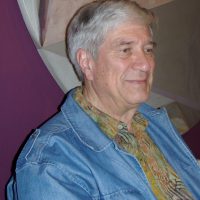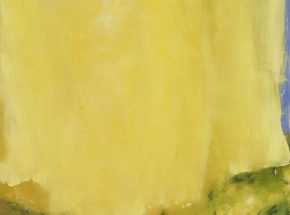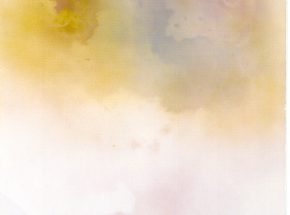

Since the early 1960’s my artworks have been about exploring and trying to resolve the dichotomy of combining geometric and biomorphic/organic imagery. I am still fascinated by the inexhaustible challenges of abstraction. And, I remain convinced that the imagery coming from inside my head is significantly more absorbing and inspiring and just as much a part of the ‘real world’ than non-abstract and more referential imagery coming from one’s experiences and perceptions. However, how do mental images get into one’s head without pursuing other alternative levels of thoughts and observances about the world in which we are living? Willem de Kooning once said, “There is not such thing as a good painting about nothing.” And, Ad Reinhardt countered with, “There is no such thing as a good painting about something.” I try “to act in the gap between the two.”
The word INCLUSION in the titles of my artworks, refers to a quote from Robert Venturi — “It (here Venturi is referring to architecture — however, while reading the book, I made the choice to substitute the idea of painting in lieu of architecture — and to think about what new visual ramifications and connections might be discovered) must embody the difficult unity of INCLUSION rather than the easy unity of exclusion. More is not less.” This inspirational and, for me, art/life changing quote is from Venturi’s book, Complexity and Contradiction in Architecture, published by the Museum of Modern Art. The INCLUSION SERIES began in 1982 and has been continually and compellingly, for me, evolving in my paintings, drawings, and monotypes to this day.
My hybrid term CHROMAXIOLOGIC, became a part of the titles of my paintings and monotypes in 2005. It is a combination of the word chroma, meaning color and the word axiology, meaning for me — the study of color and color value judgements — i.e. equiluminous colors or same value colors. This is primarily what I have been exploring in my paintings, drawings, and monotypes, also, beginning in the 1960’s. I first became aware of my interest in equiluminous uses of color because of the paintings of the Swedish-American painter, Birger Sandzen. Even after spending a summer of Saturdays in 1951 as Sandzen’s sole student painting away near him in his Lindsborg, Kansas studio — I didn’t have any real understanding of what visually tasted this good to me as a kid who was already starting to think about art. It wasn’t until many years later that I began to fully comprehend and truly appreciate Sandzen’s extraordinary use of equiluminous colors.
In addition, after 2003 my paintings and monotypes have had a special focus on exploring the wonderfully adaptable and varied uses of catenary curves — “the curve theoretically formed by a perfectly flexible, uniformly dense and thick, inextensible cable suspended from two points” — in order to make a connection with the dichotomy of my combining some aspect of geometry with my otherwise organic/biomorphic imagery.

